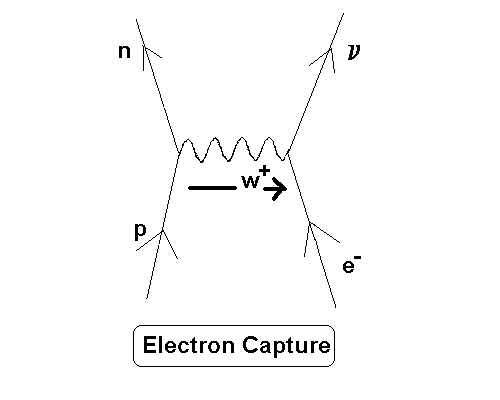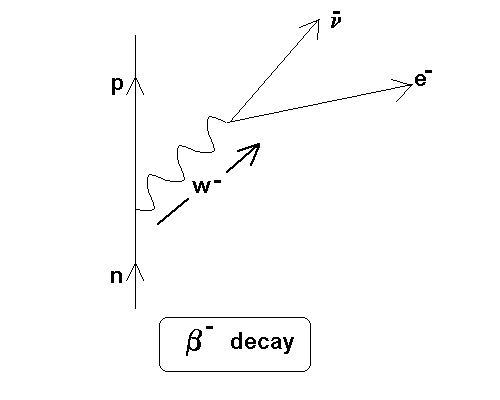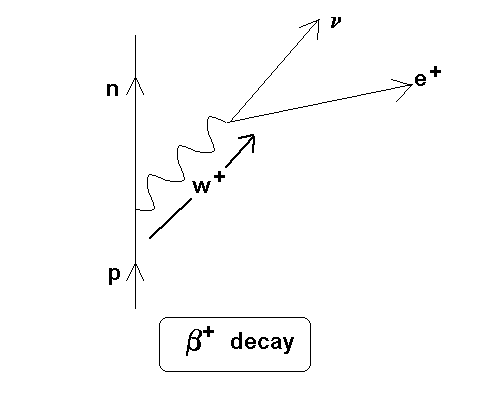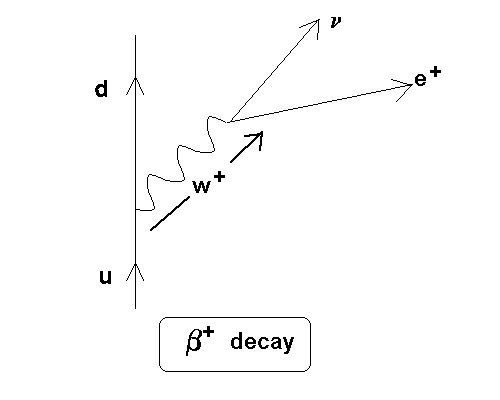Feynman Diagrams |
Here are two representations of beta decay: note that the decay of a particle start with that particle on the lower left - remember that time is the y axis (starts at the bottom left of the diagram!)
The boson arrow goes from the proton as we consider the proton acting upon the electron in the capture.

Here the boson arrow goes from the electron side as the electron collides with the proton.

The W and Z particles are the massive exchange particles which are involved in the nuclear weak interaction, the weak force between electrons and neutrinos are called Intermediate Vector Bosons.
They were predicted by Weinberg, Salam, and Glashow in 1979 and measured at CERN in 1982. The exchange particle involved in the above weak nuclear reactions (nuclear because they happen in the nucleus) is the W-boson (remember them as 'w' for 'weak' - they carry charge as well as energy and so they also need a sign, there are two varieties the W- and the W+).
Look carefully at the sign and direction the boson travels to see how its sign relates to the direction charge moves in the interaction. At each vertex there must be equal charge into and out of the point of interaction.
Z-bosons are neutral and therefore are not involved in the proton - neutron interchanges that you have to know. Those that involve charge movement are w-boson interactions.
![]() Now,
use the names of the events above to generate
equations (make sure they balance!).
Now,
use the names of the events above to generate
equations (make sure they balance!).
Remember
- All of the diagrams you have to know involve a neutron changing to a proton or vice versa!
- All of the diagrams havea w-boson exchange
- If an electron is released then an antineutrino is needed to blanace the leptons and if a positron is released a neutrino is needed to balance the leptons
From your equations try to sketch out the Feynman diagrams. Remember you have to learn them. but if you understand how they are made up it is easier.... that's what I intend to do ... make sure you understand where they come from!! Then check your answers.
Now revise the topic using my Flashcards:
Follow me...












